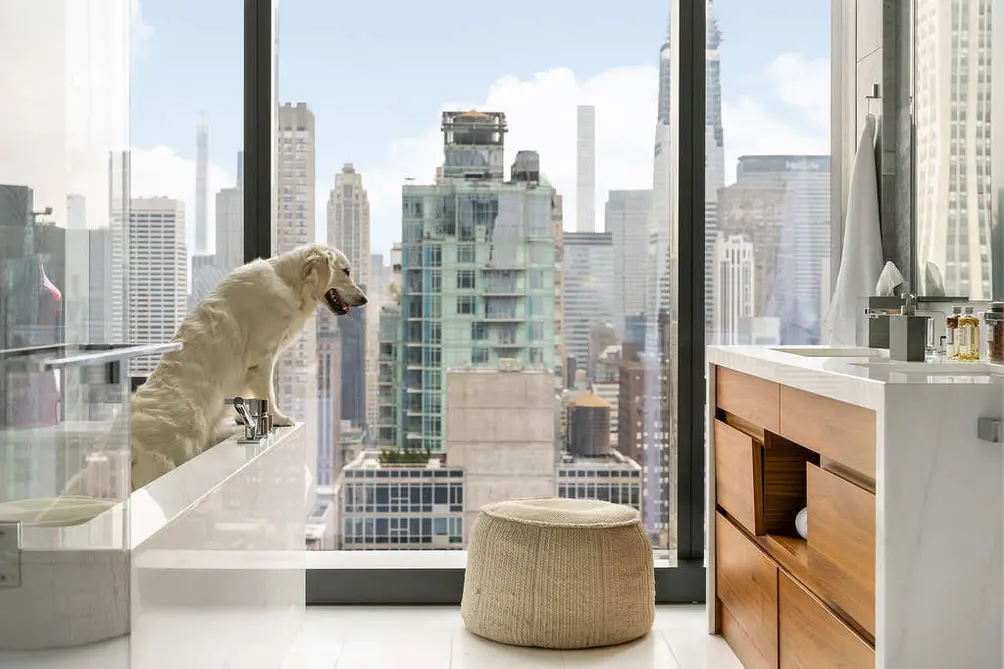 Individuals and groups of any size looking to rent in New York City should read this first. (Pexels - cottonbro studio)
Individuals and groups of any size looking to rent in New York City should read this first. (Pexels - cottonbro studio)
Renting in New York City is full of surprises, and some of the greatest surprises are hidden in New York City’s Housing Maintenance Code ("the Code"). Although not all of the Code’s clauses are consistently enforced, if you’re a local renter, it is important to understand the Code and how you and your landlord may, despite best intentions, be non-compliant.
New York City’s Housing Maintenance Code is a 141-page document offering detailed guidelines targeting landlords and tenants to ensure the “sound enforcement of minimum housing standards.” As detailed in the Housing Maintenance Code, “minimum housing standards” refer to:
Most regulations outlined in the Housing Maintenance Code are predictable and make perfect sense (e.g., landlords must inform occupants before making repairs that will interrupt their heat, hot water, electricity, or gas). However, the Code also features a few surprising and unusual regulations.
New York City’s Housing Maintenance Code is a 141-page document offering detailed guidelines targeting landlords and tenants to ensure the “sound enforcement of minimum housing standards.” As detailed in the Housing Maintenance Code, “minimum housing standards” refer to:
1. The preservation of “decent housing,”
2. The prevention of “adequate or salvageable housing from deteriorating to the point where it can no longer be reclaimed,” and
3. The promotion of “basic decencies and minimal standards of healthful living in already deteriorated dwellings, which, although no longer salvageable, must serve as habitations until they can be replaced.”
Most regulations outlined in the Housing Maintenance Code are predictable and make perfect sense (e.g., landlords must inform occupants before making repairs that will interrupt their heat, hot water, electricity, or gas). However, the Code also features a few surprising and unusual regulations.
It’s illegal to rent an apartment with more than three friends
NYC’s Housing Maintenance Code states that apartments may be rented to “families.” While a family can, according to the Code, include unrelated persons, there is a limit on how many unrelated persons can live in the same apartment. As stated under § 27–2004, it is not permissible for “more than three unrelated persons occupying a dwelling unit and maintaining a common household.” As a result, if you’re sharing an apartment with four friends, you’re likely violating the Code, unless your situation is covered by one of the Code’s exceptions. For example, up to seven students may live in the same unit, but only if they are living in a dwelling that has been classified as a dorm.Although this section of the Code, commonly known as the “roommate law,” exists, enforcing it is easier said than done. After all, the only way to enforce the law would be to send inspectors to every rental unit in the city, which seems both unlikely and unfeasible. But this doesn’t mean that multiple roommates piling into small apartments can or should rest easy. Given that the Code limits the number of unrelated individuals who can share an apartment, it is still frequently used by landlords to limit unauthorized sublets.
Every tenant has the right to a peephole
As it turns out, in New York City, surveillance is a two-way street. While your landlord or management company may be keeping tabs on who is living in your apartment, as a tenant, you also have the right to put others under surveillance, at least if they are lingering outside your door. As per § 27–2041 NYC’s Housing Maintenance Code:However, there are a few exceptions to the rule. If you’re living in a tenant- or owner-occupied one- or two-family home, an apartment hotel, or a dorm, you don’t have the right to a peephole.
Building elevators must include mirrors
If you’ve ever assumed that mirrored elevators are just a stylistic feature, you may be surprised to discover that in New York City, elevators must include mirrors. As detailed in § 27–2042: Don't let any surprises pop up (Kenneth Chen)
Don't let any surprises pop up (Kenneth Chen)
There is a loophole for some pets
New Yorkers love their pets, but only a few living creatures can be legally kept as pets. Currently, the list includes domesticated cats, dogs, rabbits, hens, and horses, a variety of small rodents, some reptiles, non-snapping turtles (only those larger than 4 inches), and honeybees. All living creatures that are not on the acceptable pet list are strictly prohibited. So, if you’re thinking of harboring venomous spiders, wolves, woodchucks, camels, pigs, dolphins, or piranhas, you’re asking for trouble. But what if you are harboring an animal that can be legally kept as a pet in New York City in a building where pets are prohibited (e.g., you are keeping a pet lizard in a no-pet building)?While it is never advisable to harbor a pet in a building that prohibits pets or prohibits pets of a certain type or size, there is a loophole in the housing maintenance code that may protect your right to keep your pet. According to § 27–2009:
In essence, the Code suggests that if you move into a no-pet building with your pet lizard but don’t hide your lizard and, in fact, “openly and notoriously for a period of three months or more following taking possession of a unit” flaunt the fact that you have a pet lizard, and no one says anything about your lizard, then, it technically should be able to remain in your home. However, if the lizard happens to be unauthorized (after only “certain reptiles” are authorized) or your lizard “causes damage to the subject premise, creates a nuisance or interferes substantially with the health, safety or welfare of other tenants or occupants of the same or adjacent building or structure,” it may still be grounds for eviction.
Some landlords have the legal right to offer cleaning tips
According to the Code, if you happen to live in a building that has been identified as “distressed” and management notices that you are the kind of tenant who never does the dishes or fails to store food properly, they technically have the right to offer advice to you on cleaning matters. The Code also states that you must listen to their advice. As stated under Article 10, §27–2153:
Contributing Writer
Cait Etherington
Cait Etherington has over twenty years of experience working as a journalist and communications consultant. Her articles and reviews have been published in newspapers and magazines across the United States and internationally. An experienced financial writer, Cait is committed to exposing the human side of stories about contemporary business, banking and workplace relations. She also enjoys writing about trends, lifestyles and real estate in New York City where she lives with her family in a cozy apartment on the twentieth floor of a Manhattan high rise.

 6sqft delivers the latest on real estate, architecture, and design, straight from New York City.
6sqft delivers the latest on real estate, architecture, and design, straight from New York City.
